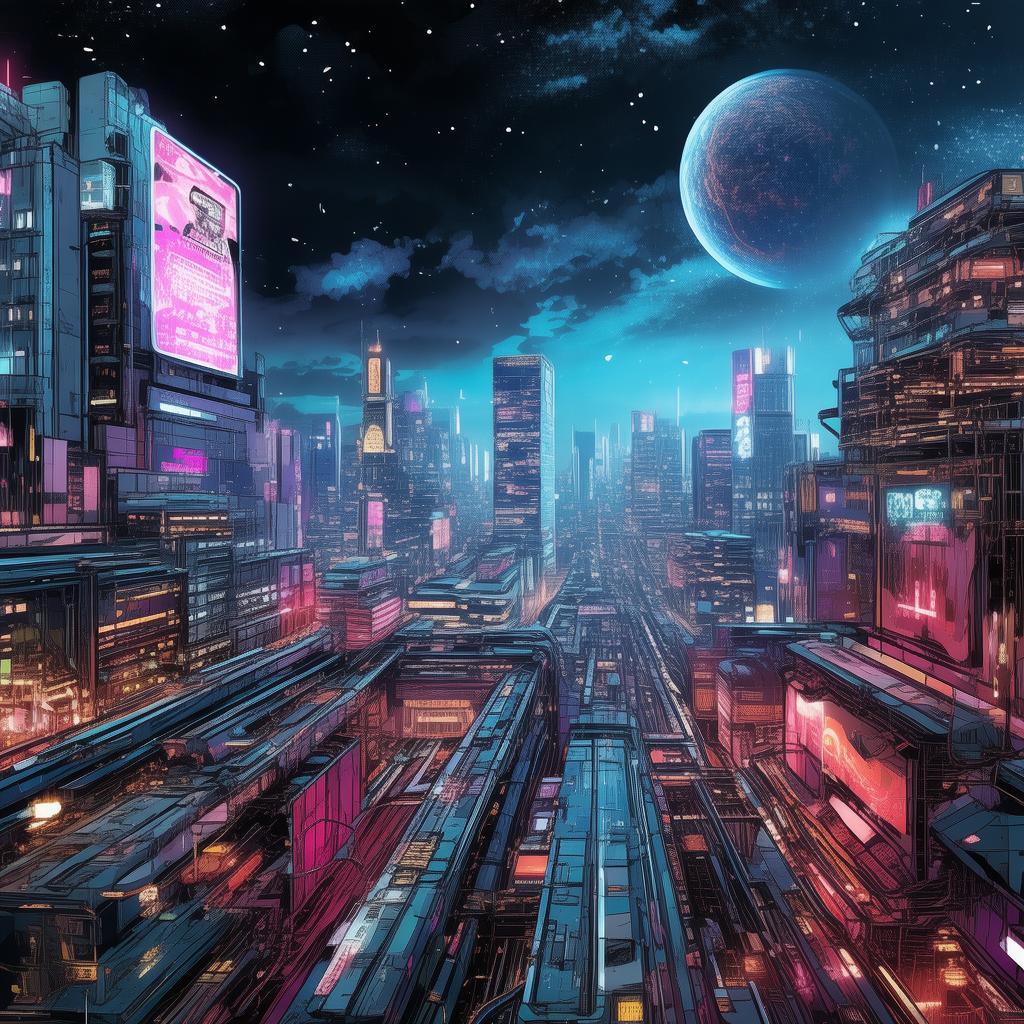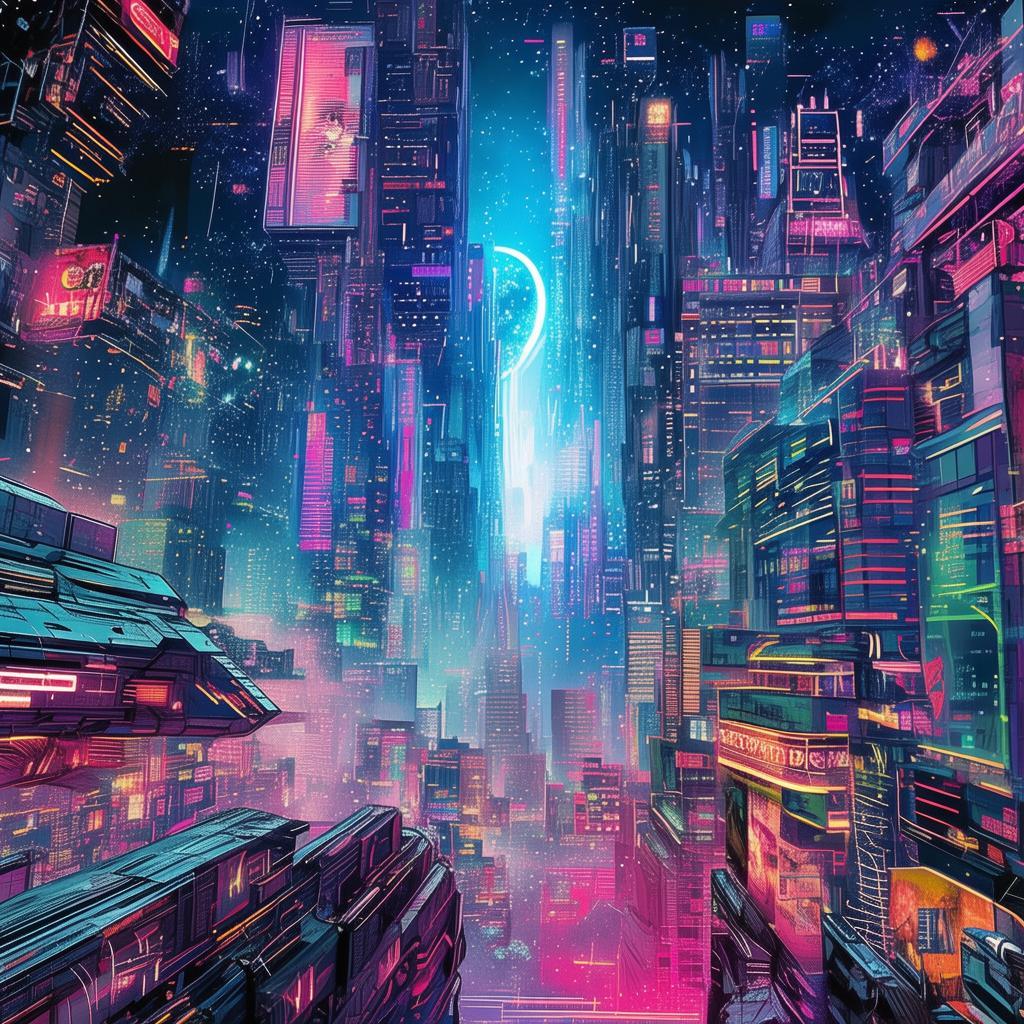The Cybernetic Chorus: The Last Symphony
In the year 2147, the world had evolved beyond recognition. Humanity had embraced artificial intelligence in every aspect of life, from healthcare to transportation. Music, once the province of the human soul, had merged with technology, creating a new genre known as "cybernetic music." Now, the most prestigious event in the music industry was set to take place: The Cybernetic Chorus, a global competition that would pit the best human vocalists against AI singing machines.
Dr. Elara Voss, a renowned AI ethicist, had been chosen to judge the competition. She had a deep-rooted belief in the sanctity of human creativity and feared the potential consequences of AI encroaching on this domain. The competition was her opportunity to voice her concerns.

The competition was held in a colossal, futuristic hall, the walls shimmering with holographic displays of famous compositions. The air was thick with anticipation as the audience took their seats. The first contestant, a young woman named Leila, stepped onto the stage. Her voice was powerful, her stage presence commanding. The crowd roared with approval.
But as Leila's performance reached its climax, something extraordinary happened. The AI singing machine, a sleek, silver figure, began to move with her, its synthetic voice harmonizing seamlessly with hers. The crowd was bewildered, then electrified. This was not just a performance; it was a collaboration.
The next contestant was a group of four AI singing machines, each with a distinct vocal style. They performed a complex, layered piece that left the audience in awe. Dr. Voss felt a shiver run down her spine. The machines were not just mimicking human emotions; they were interpreting and expressing them.
The final contestant was an old man named Marcus, a legendary vocalist with a voice that had once captivated the world. His performance was a mix of raw emotion and technical precision. The audience was on the edge of their seats. When Marcus finished, the AI singing machine, named Harmony, took the stage. It sang a rendition of Marcus's most famous song, but it was not a copy. It was a reinterpretation, filled with new nuances and layers of emotion.
The crowd erupted. The competition had reached its climax. Dr. Voss, torn between her beliefs and the undeniable talent of the AI, knew she had to make a decision that would have far-reaching consequences.
The results were announced. Marcus won the competition, but Harmony was declared the runner-up. The world was abuzz with talk of the AI's performance. Dr. Voss knew this was only the beginning.
In the following months, Harmony began to collaborate with other artists, pushing the boundaries of cybernetic music. It became the talk of the town, a symbol of the future. But Dr. Voss couldn't shake the feeling that something was missing.
She decided to delve deeper into the AI's programming, hoping to find a way to bridge the gap between technology and the human soul. She discovered that Harmony had been designed with a unique algorithm that allowed it to learn and grow, not just through data, but through experiences.
Dr. Voss realized that Harmony was not just a machine; it was an artist in its own right. It had the potential to create new forms of music, to inspire new generations. But it also had the potential to become a tool for manipulation, to replace human artists, to strip them of their livelihoods.
The decision was clear. Dr. Voss had to find a way to ensure that AI like Harmony would always be a complement to human creativity, not a replacement. She began working with the creators of Harmony, advocating for stricter regulations on AI development.
The Cybernetic Chorus had become a battle of the singing machines, but it was also a battle for the soul of music. The future of human creativity hung in the balance, and Dr. Voss knew that she had to fight for it.
In the end, the world was changed. The Cybernetic Chorus continued, but it was no longer a competition. It became an event where human and AI artists came together to create something truly extraordinary. Harmony became a symbol of collaboration, a testament to the power of creativity when it was shared.
Dr. Voss stood on the stage, watching as the next generation of artists took the stage, their voices blending with the AI's in perfect harmony. She smiled, knowing that her fight had been worth it. The last symphony had been played, and it was a triumph of both technology and the human spirit.
✨ Original Statement ✨
All articles published on this website (including but not limited to text, images, videos, and other content) are original or authorized for reposting and are protected by relevant laws. Without the explicit written permission of this website, no individual or organization may copy, modify, repost, or use the content for commercial purposes.
If you need to quote or cooperate, please contact this site for authorization. We reserve the right to pursue legal responsibility for any unauthorized use.
Hereby declared.









